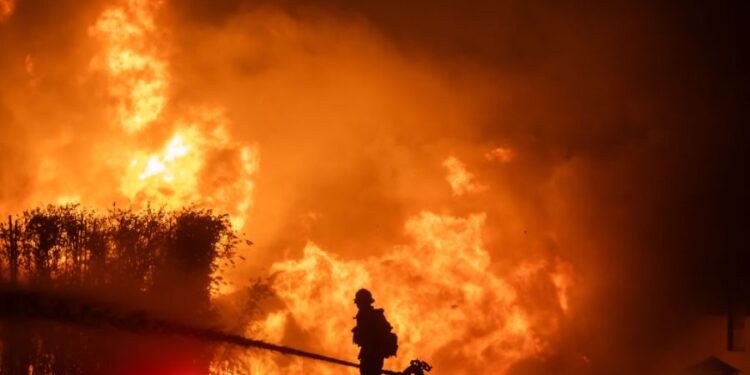
(NewsNation) — Total damage from the devastating wildfires scorching Southern California could amount to between $135 billion to $150 billion, according to AccuWeather, a private company specializing in weather data.
The wildfires were previously estimated to cost around $50 billion, $10 billion of which is expected to be insured, according to JPMorgan.
As homeowners try to recover from the fires, they could face challenges. Many homeowners in California have already experienced difficulty getting insurance, and some have had their insurance canceled.
Last summer in Pacific Palisades, 70% of State Farm customers, about 1,600 homeowners, lost coverage when the insurer dropped policies in and around the Santa Monica mountains.
There are 9,000 households in Palisades alone, and more than 100,000 Californians have lost coverage since 2019, according to the San Francisco Chronicle.
One resident, who was forced to evacuate and does not know if her home survived, received a letter from State Farm in March.
“We are sorry that we cannot continue this insurance, therefore your policy will not be renewed,” the letter read. “Personal lines, homeowner and dwelling fire insurance policies that present the most substantial wildfire, fire following earthquake hazards, or that are in areas of significant concentration are no longer eligible.”
Homeowners have largely replaced their fire coverage with a state plan of last resort called the California FAIR Plan — an insurance pool that covers up to $3 million in damages for residential properties and $20 million for commercial properties. This will be the first major test of the FAIR system.
Insurers began dropping plans after 2017 and 2018 when back-to-back wildfires in California resulted in losses totaling $23 billion. Insurers paid out twice as much in claims as they received in premiums.
That has left major insurers reluctant to do business in the state. Allstate dropped its business entirely in California in 2023, saying it would come back if regulatory changes were made to protect its bottom line.
With similar issues facing Florida residents, the U.S. could see some significant population shifts as homeowners in two of the most populous states find they can’t receive coverage.







